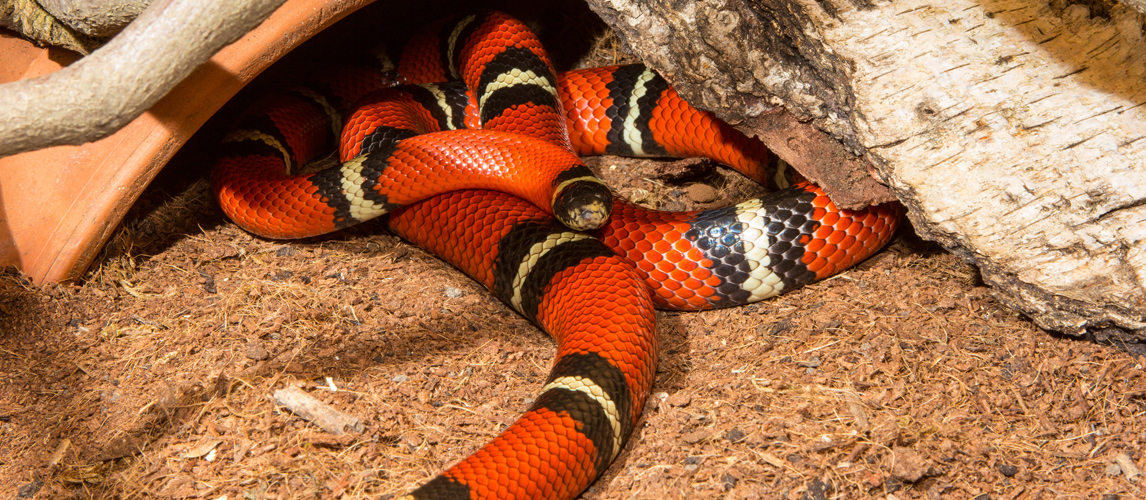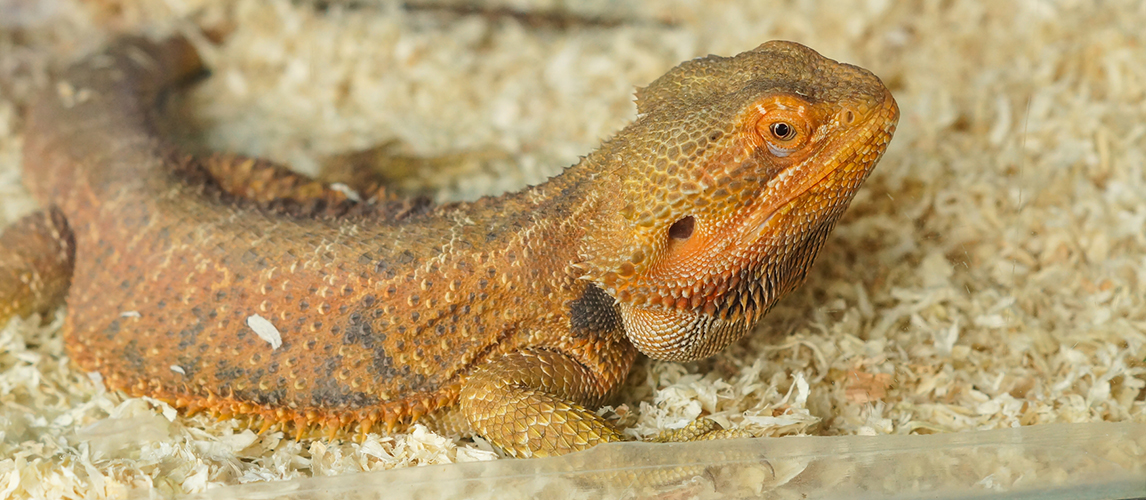Why do people get pets? It might seem like a strange question for us to ask, but it is an important question to consider if you are looking for a pet in order to make sure you find the right one. Some people like companionship while others enjoy the learning experience. Some people are allergic to fur, and others are scared of snakes.
Whatever your interests and needs, dogs and cats are not the only way to go if you are looking for a pet, and I recommend geckos! They can be cute and interesting, and have such a huge variety that I’m sure you can find something to suit your personality and experience with reptiles. To get you started, here are our 7 recommendations.
Whether you are a beginner with reptiles, looking to make the switch to a new reptile species, or a gecko expert interested in taking in a new breed, it can be difficult to know where to start. Here are seven geckos that make good pets for a variety of different reasons, such as ease of care, offering a challenge, or just being beautiful to look at:
1. The Giant Day Gecko
Many first-time gecko owners should focus on getting a diurnal gecko because this means they will be most active during the day. The giant day gecko is a great diurnal option for first-timers because they are beautiful with colors of bright green and red, live long lives of up to 30 years, and are big, which means you won’t worry that they’ve escaped when you glance at their habitat. That isn’t to say that escape is impossible, most geckos, the giant day gecko included, are amazing climbers and this includes climbing up glass.
Caring for a giant day gecko is also relatively easy. First of all, they do not enjoy communal terrariums, so you are not obligated to care for more than one at a time. Their tanks should be tall, rather than wide, and filled with plants. You must ensure that you can provide a tank with sufficient temperature and humidity control, and, of course, provide plenty of water and food. Not all geckos eat the same foods. The giant day gecko eats wax worms, mealworms, crickets, large fruit files and fruit puree.
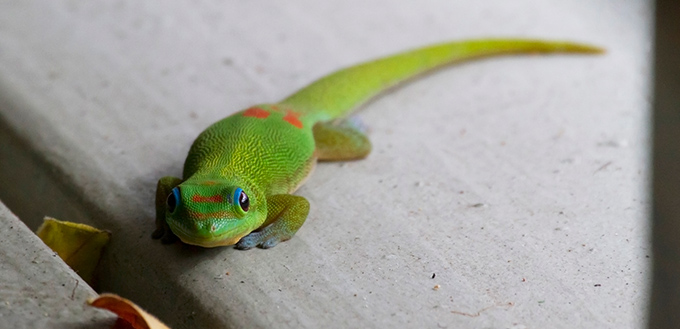
2. The White Lined Gecko
Another recommendation for newcomers is the white lined gecko. It is known for its calm nature, its climbing ability, and the way it curls its tail when disturbed. You cannot, however, care for one white lined gecko as they are social lizards that need a community. Unfortunately, the males are territorial, so do not house them in the same environment, but the good news is that they prefer small communities of around two to three geckos, and watching them interact can be great fun!
A tank that is suitable for these three geckos must be at least 35 gallons as each of them could grow to 10 inches long and they can be quite active. Fill this with fun plants to climb and caves to explore. You must provide them with high temperatures and humidity, but, ultimately, the gecko’s calm nature and uncomplicated diet of insects make them relative easy to care for.
3. The Madagascar Ocelot Gecko
Another name for the Madagascar ocelot gecko is the big headed gecko. This is because – you guessed it – they have a big head. They use this head to burrow into sand as they often hide during the day because they are nocturnal. We don’t generally recommend nocturnal pets to newbie gecko owners because they can appear boring during the day. We recommend this gecko to experienced reptile and gecko owners, who may even be looking to move into breeding.
The big headed gecko is a prolific breeder. A female can lay up to thirty eggs in a season. If you are considering taking up this challenge, however, you must act responsibly. Do your research and ask for advice from vets and more experienced owners. You must provide calcium supplementation, for example, for a pregnant big headed gecko and, as always, carefully provide the right environment, food and water provisions.
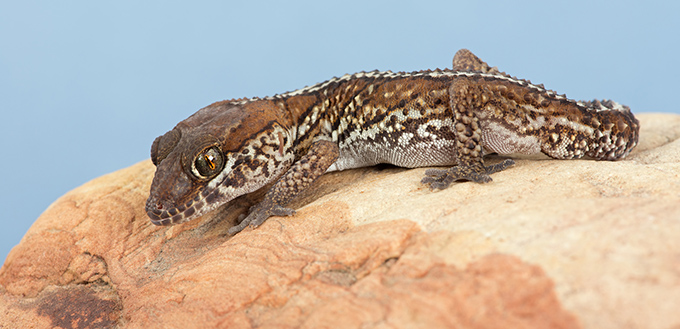
4. The Leopard Gecko
Possibly the most common gecko pet, and for good reason, the leopard gecko is potentially a good pet for older children developing their responsibility, or nervous first time gecko owners. As a nocturnal species, you may not see the most exciting parts of it’s life, but as a pretty calm breed, this gecko can get used to being handled and possibly even moderately played with. Too much, however, will stress them out, which can lead them to bite.
They live for an average of 10 years, although have been known to reach 20, and prefer to live in pairs or alone. This can mean a moderate commitment compared with other geckos, who can need lots of friends and live for 30 years. However, there are other lizards with much smaller life spans if you can’t ensure that you will be able to care for an animal for up to two decades. You should feed them live insects in the evening, and, unusually, they prefer rocks and grass to sand.
Related Post: Leopard Gecko Substrate
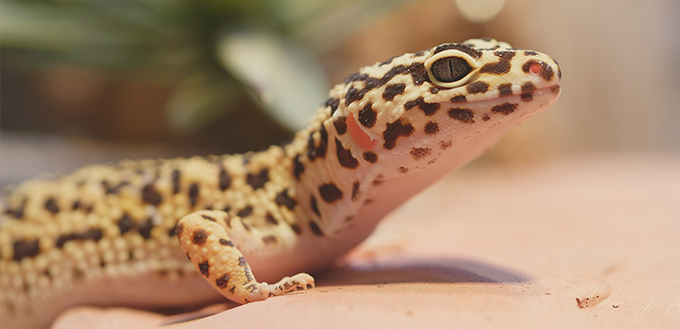
5. The Crested Gecko
The crested gecko is another very popular choice of pet for beginners and experienced gecko owners alike. They have a reputation for being easy, and friendly climbers, and were actually thought to be extinct until only 25 years ago! As they are climbers, you should provide the crested gecko with a vertical environment with lots of hiding spaces and branches.
You can feed them insects, but another part of their appeal is that there is a commercially available diet called ‘Repashy’s Crested Gecko Diet’ that has been designed with all the vitamins and minerals a crested gecko needs. This can make feeding very easy. While, unlike other geckos, they do not grow back their tails once lost, there is no need to worry if this happens to your crested gecko. They can live perfectly happy and healthy lives without it.
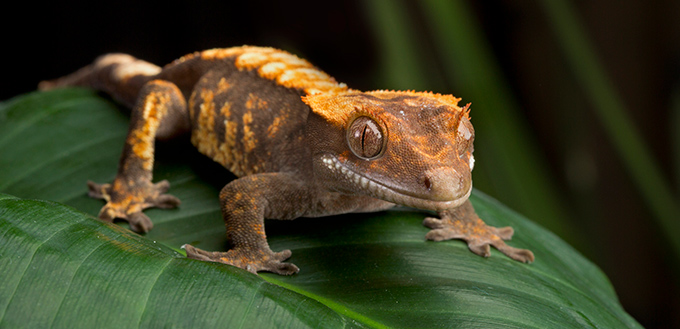
6. The Gargoyle Gecko
There is some debate as to how suitable the gargoyle gecko is for beginners. They make fascinating pets due to their gargoyle like appearance and their love of trees and wide open spaces. The controversy comes due to their similarity to the crested gecko, which is often recommended as a good pet for beginners.
However, they are slightly more challenging and potentially demanding, and they have very different temperaments when it comes to socializing. Although they live in groups, they do not tend to interact with one another and have been known to bite humans. In order to manage a tank of gargoyle geckos, you may need to invest in a particularly large terrarium, which can offer each of them the personal space they need, and a variety of uncluttered spaces and plants for climbing.
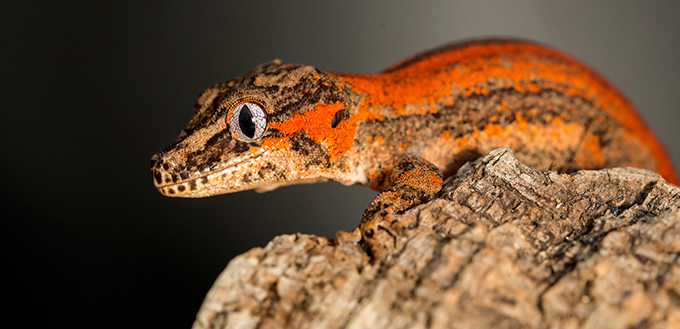
7. The Frog Eyed Gecko
Last, but not least, a great gecko pet is the frog eyed gecko. They may well be the most fascinating breed on this list, but, unfortunately, this comes at a price and they are not the easiest pet to maintain. We recommend previous reptile experience before tackling this tricky customer. The frog eyed gecko is interesting due to its fish-like brown-orange scales. They use them to scare away predators, establish territory and court potential mates.
Originating from the Northwestern Chinese desert, they enjoy burrowing and have used this skill to survive in the desert. This is where owning a frog eyed gecko can get tricky. Replicating this desert environment can be a challenge. Not only do they require high temperatures during the day, but carefully managed temperature drops during winter and every night. You should also provide them with moist sand for them to create a burrow, but they aren’t climbers, so don’t require climbing aids.
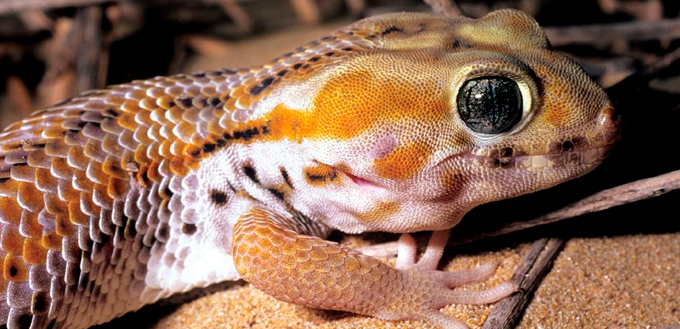
Are There More Geckos To Consider?
Yes. The major attraction of geckos is that there are simply so many possible breeds to choose from. We’ve only explored seven of them, but other breeds that are worth mentioning as potentially interesting gecko pets are:
- The Mossy Prehensile-Tailed Gecko
With beautiful gold eyes, this New Caledonian gecko has increased in popularity in recent years. It can live up 30 years and requires care similar to that of the crested and gargoyle geckos. Unlike many other breeds, their tail only partially regenerates.
- The Giant New Caledonian Gecko
Another breed from New Caledonia, the giant New Caledonian gecko is, unsurprisingly, very large and strong. They also have a distinctive coloration used in the wild for camouflage, that many find beautiful.
- The Tokay Gecko
Native to Asia, the tokay gecko is very large, vocal and social. Their natural orange-red and blue-grey pattern is as sought after as the other, more rare color combinations that exist, but watch out for biting.
- The Neon Day Gecko
As you might imagine from the name, the neon day gecko is most active during the day and is very eye catching. With blues, blacks and yellow-greens, it may require some previous reptile experience, but can be a rewarding pet due to its relative comfort being handled.
Sources:
- Leopard Gecko, SeaWorld Parks & Entertainment
- So You Think You Want a Pet Gecko?, The Children’s Museum of Indianapolis
- Giant Day Gecko, South Carolina Aquarium



